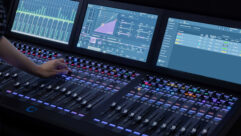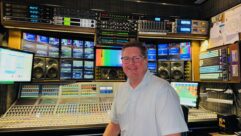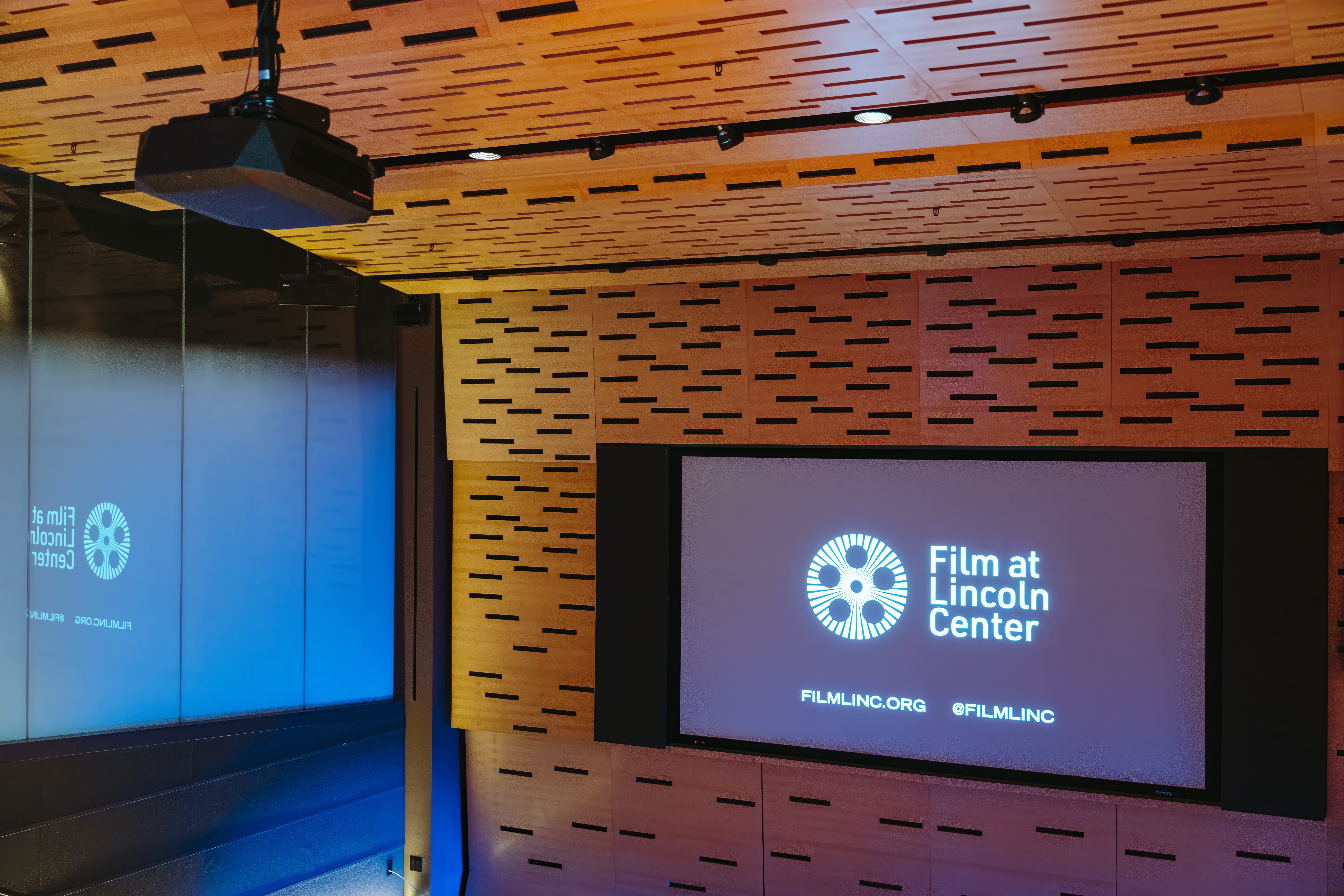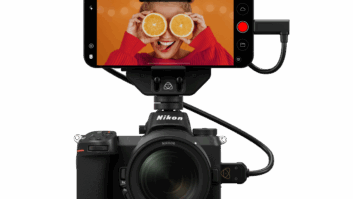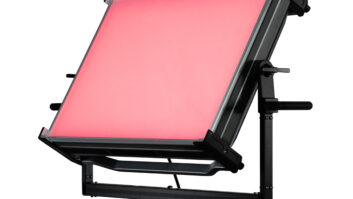Tell us about your path to professional audio. How did you get started and what drew you to the field and technical nature of being an audio professional?
As a teenager I had a growing interest in music, music production and music technology. I studied Music Technology at college in Nottingham. After my course, I ended up freelancing, primarily in live music and live events and after this I went on to work in the broadcast sector.
Can you share more about your background and the range of work you do, including in live sound engineering, studio mixing, broadcast, theatre, location recording, and music production? How do you adapt your skills to meet all of these unique and different areas of professional audio?
I work in various sectors and do sound engineering in a variety of forms. I work in TV, music, theatre and live events. There’s a core aspect common to all of these forms of sound engineering, but each area has its own specific workflows and knowledge. I find that my experience in other aspects of sound engineering feeds into my work as a Sound Supervisor and vice versa. Mixing and recording is probably the area I’ve had the most amount of experience in across all of these different fields. Getting a good balance and making things sound pleasing to the listener- ultimately, having a good ear and a knowledge of how to make the most of the equipment transfers across all of these areas.
What are some of the projects you’ve most enjoyed working on? Can you name some highlights in your career so far?
In a broadcast mixing role, some of the productions I’ve worked on include: Premier League Football, The Olympics, Australian Open and Davis Cup Tennis, Formula E World Championship Racing, UEFA Women’s Champions League Football and BBC News. I’ve mixed boxing, rugby and other sports as well. I’ve also done a bit of eSports for Red Bull Gaming.
Your clients describe you as “knowledgeable”, “professional”, and that you are a “quick- thinking problem solver”. How do you approach your work to ensure that your clients get a positive experience?
I tend to try and prevent problems that can be avoidable rather than having to sort them out later down the line. Whether that’s in the prep stages at my end (before a job) or thinking through scenarios during a rig. Thinking through potential issues in advance is ideal for me. I find it’s much easier to have thought in advance about how to resolve problems if and when they do occur. I also try to make good headway during a rig as early as possible. That way things can be ready in good time for a FACs check or a line-up, for example, before other people need them. I find it makes for a more relaxed experience for everyone involved and it leaves space for the lighter moments of the day which is also important. It’s not about rushing but I think it’s often about being organised, prioritising and verifying things as soon as possible. I never assume that kit and cables are going to be fault free until they’ve been tested. I think people I work with and for, are comfortable with my work, in part, because I tend to stay calm. Part of that, I think, is probably about having the right perspective. I find staying calm does help to think clearly and helps others to have a good working environment.
Can you describe a scenario/project where you had to act quickly to adapt a workflow to accommodate a stressful situation or last-minute change?
Often, it’s the last-minute requests and additions. Again, I find it helpful to prepare for things in advance if possible and checking if there are any spares available in terms of mics, for example. Factoring in the extra channels and buses on the desk can also be helpful. Sometimes having an aux mix already set up can be handy for something you’re sure might well be needed but you haven’t been asked for it yet. Then it’s fairly quick to allocate any ports and then arrange for it all to be rigged.
How did your relationship with Calrec begin and what Calrec consoles have you used over the years? What Calrec console do you use the most now and why?
When I moved into broadcast sports work as a Sound Assistant, I spent a fair bit of time asking other Sound Supervisors about their workflow and watching them mix in my downtime. I’m grateful to them for that earlier input. I also got some hands-on training with Calrec’s Artemis console at their Hebden Bridge HQ. When I then started mixing on Calrec desks, I felt pretty comfortable using them straight away. I’ve used the Artemis, Sigma and Brio but I mainly use the Artemis. It’s a widely-used desk in various studios and trucks here in the UK.
What differentiates Calrec from other console makers in the industry? What features do you favor about their products?
I like the way I can configure a layout on the surface pretty quickly as well as setup and rearrange the fader bays to suit my workflow during different productions. It’s very easy to send tone down different signal paths, including inputs, which is very important. And the routing is very straightforward and flexible.
What audio console features are most useful to you and what features do you think you will need from a broadcast audio desk in the future?
One of the most useful aspects of the desk is being able to have different options for backup mics that can be accessed very quickly. Whether it’s the Input 2 function or using a B layer. If there ever would be a fault during transmission, it’s possible to switch over very quickly. The backstop PFL on the faders is used often. Having the most common functions work well is important, including your EQ and compression, delays and routing, etc. I think Calrec desks are well designed in that sense. It’s very easy to access what you need and the colour coding certainly helps.
In terms of console technology, what can you do with today’s consoles that would have been impossible to do when you first started 10 years ago?
When I started freelancing, I saw more analogue desks and a mixture of digital desks. Now digital desks are much more ubiquitous. The workflow of this is quite a bit different but I think it’s good to have an understanding of both. Audio over IP such as Dante has also come to be adopted across so many devices. Being a decent protocol, it’s much more widely used now alongside other forms of transport such as copper and Hydra boxes.
The broadcast industry is moving towards IP-based solutions for audio control, networking and distribution. What is your experience with these changes and what are the biggest challenges to adopting an IP infrastructure?
It helps to have some kind of practical understanding of networking. It’s similar with digital workflow in that your mindset has to adapt to a different way of working. Having a primary and secondary wherever possible for example. And knowing how to check the status and history of devices. I think it’s also about knowing the strengths and weaknesses of each solution and even combining them where necessary. Sometimes IP makes the most sense to use, sometimes copper, and sometimes it’s a combination of both.
Remote working is an established part of the broadcast landscape. Can you describe how you have worked in this way and what the benefits are?
I’ve done remote outside broadcasts where some of the crew is onsite in another country but I’m mixing from a studio facility in the UK. From that point of view, it definitely has its pros in terms of working closer to home. It does add some disconnect with face-to-face interaction with whoever I’m working with, but it can also offer a slightly better mixing environment than a truck can.
What do you think audio desks need to include in the future?
I think audio desks of the future could increase the possibility for distributed remote working — promoting situations where Sound Supervisors can be at their homes mixing live to air. Various crew members could be in different homes connected over the internet. We saw that during lockdown a little. I think it could increase the possibilities of working closer to home in different ways.
For more information about Aston Fearon, please visit: www.astonfearon.co.uk



